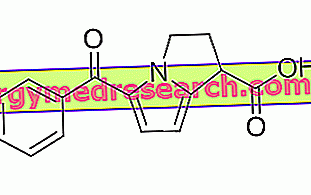Related articles: Age-related macular degeneration
Definition
Age-related macular degeneration is a chronic disease that causes a progressive deterioration of the macula, ie the central portion of the retina responsible for clear vision.
This pathology is associated with the aging process and occurs mainly in subjects over the age of 50.
The macula rests on a layer of cells (pigment epithelium), externally lined with the vascular tunic (choroid). As we age, the pigmented epithelium loses its ability to remove debris, which accumulates and settles under it, while the blood vessels of the choroid, necessary to bring oxygen and nourishment to the retina, go to meet a gradual sclerosis.
Age-related macular degeneration can evolve into two forms:
- Dry form : covers 90% of cases and is progressively slower. Initially, it is characterized by the formation of deposits below the macula (drusen). This anomaly progressively alters the functionality of the cells used to perceive light stimuli. In the most advanced stages of the pathology, thinning of the layer of photosensitive cells can lead to atrophy or tissue death. In some cases, dry macular degeneration can progress to wet form.
- Wet (or exudative) form : it represents only 10% of the cases, but it is faster in compromising the view. At the macula, abnormal blood vessels (choroidal neovascularization) form, with very fragile walls, which can exude liquid or break causing retinal haemorrhages.
In addition to aging, the risk factors that can predispose to the development of age-related macular degeneration include: heredity, female sex, smoking, obesity, a diet low in fruit and vegetables, prolonged exposure to sunlight or other types of ultraviolet light, hypertension and high cholesterol levels in the blood.
Most common symptoms and signs *
- Eye fatigue
- Halo around the light
- Altered color vision
- Night Blindness
- Narrowing of the visual field
- Reduced vision
- Double vision
- Blurred vision
Further indications
Some cases of macular degeneration are mild and hardly completely affect vision, while other forms are severe and can cause vision loss in both eyes. In general, the pathological process is bilateral, although the clinical aspect and the degree of visual loss can vary from one eye to the other.
The symptoms of dry macular degeneration include a visual blurring and the perception of a dark or empty area in the center of the visual field. Over time, this blind spot becomes larger and further compromises vision, making reading, driving and other daily activities more difficult.
The symptoms of the wet form arise and worsen rapidly, leading to the sudden loss of central vision: the observed images appear distorted, blurred and confused or irregular.
Regardless of the type of macular degeneration, the most common symptoms include: gradual night vision loss, reduced visual acuity, photophobia (increases sensitivity to particularly strong light), difficulty adapting from darkness to light and to distinguish colors. The straight lines may appear curved, the sensitivity to contrast decreases and the objects appear to be of a shape and size offset from before.
Patients with age-related macular degeneration can also have the need for an increasingly brighter light source to see up close and can demonstrate some difficulty in recognizing people's faces.
Macular degeneration almost never causes complete blindness, as it does not affect peripheral vision, but can cause significant visual impairment. In the more advanced stages, for example, the patient can distinguish the shape of a clock, but may not be able to see the hands of the clock to say what time it is.
The diagnosis of age-related macular degeneration can be formulated by examining the ocular fundus, while fluorangiography and optical coherence tomography (OCT) help plan therapy.
The treatment uses food supplements based on antioxidant substances, intravitreal injection of vascular endothelial growth factor receptor antagonists (anti-anti-angiogenic drugs), laser photocoagulation, photodynamic therapy and devices to correct low vision, such as glasses.
A balanced diet rich in fruit and vegetables and low in animal fats, the abolition of smoking, the use of sunglasses and periodic checks by the ophthalmologist are the most effective means to reduce the risk or to immediately catch the signs of disease.


